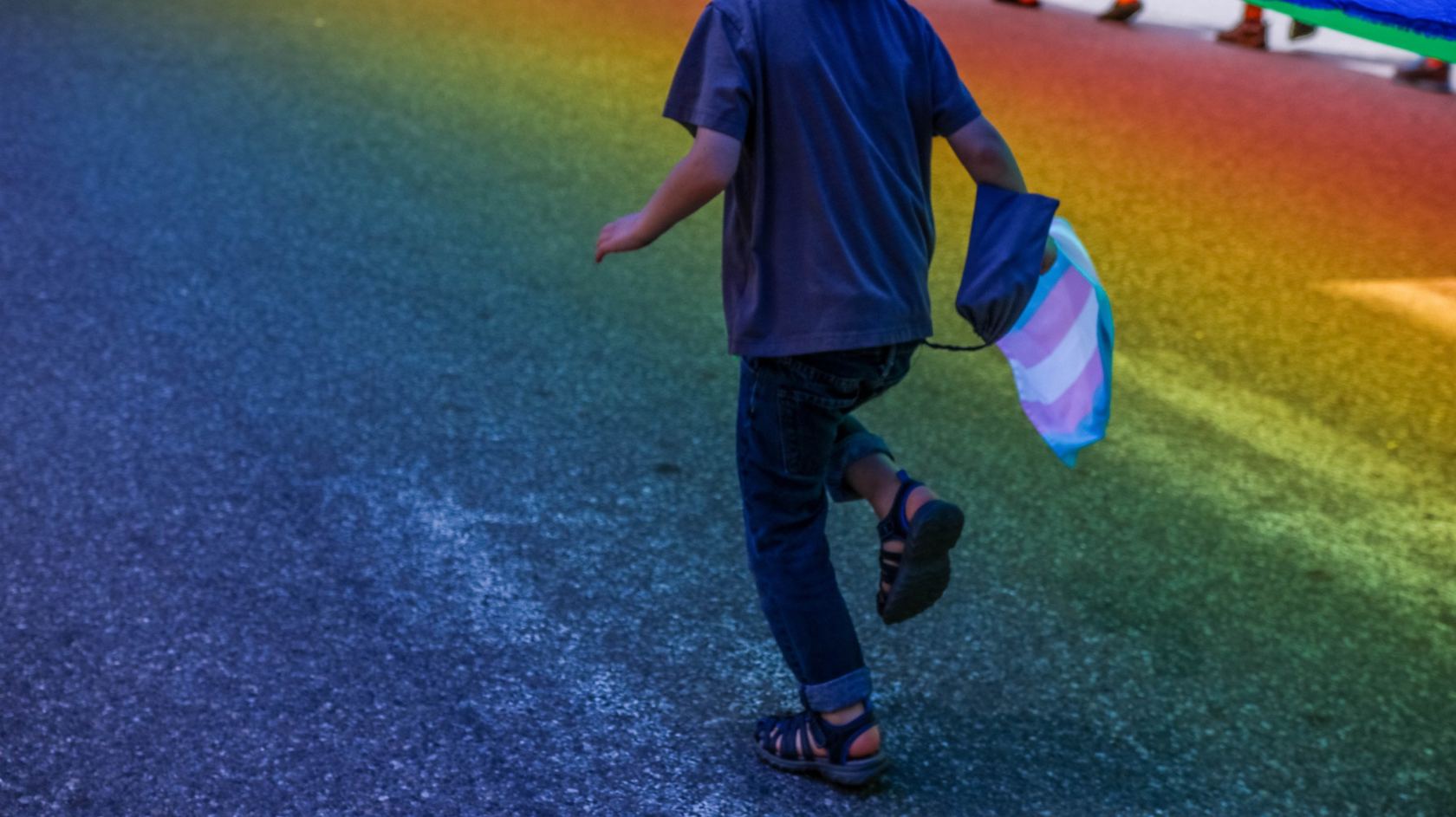Adolescence is a critical time of growth, self-discovery, and, unfortunately, significant challenges. Some teens struggle with behavioral issues, emotional regulation, mental health disorders, and unhealthy coping mechanisms that interfere with their daily lives. When...
Recent Posts
After Residential Treatment: Helping Teens Transition Back Home
Residential treatment can be life-changing for a teen struggling with mental health, trauma, or behavioral challenges. But what happens after your child returns home? The transition back to daily life is a critical period — one that requires patience, structure, and...
How Residential Treatment Supports Teens with Co-Occurring Disorders
Navigating adolescence is challenging enough, but for teens grappling with co-occurring disorders, the journey can feel insurmountable. Co-occurring disorders, also known as dual diagnoses, refer to the presence of two health disorders occurring at the same time....
A Parent’s Guide To Navigating Grief In Teenagers
Grief is a complex emotion that can be challenging for teens to navigate. According to the Childhood Bereavement Estimation Model (CBEM), 1 in 12 children and teens in the U.S. will experience the death of a parent or sibling by age 18. While grief is usually...
How Long Is Residential Treatment for Teens?
If your child is about to begin a stay at a residential treatment center, you’re bound to have a lot of questions. What types of therapy will be involved? Will our family be allowed to visit? And, of course, how long is a teen residential treatment program? In this...
Is Residential Treatment Considered Inpatient or Outpatient?
If you’ve never engaged with residential treatment centers before, it’s common to ask: is residential treatment considered inpatient or outpatient? Well, the answer is simple: our residential teen treatment centers are considered inpatient because teens stay at our...
Benefits of Residential Treatment for Teens: When to Choose It Over Other Treatment Programs
When seeking help for your teen, it’s important to know the benefits of residential treatment teens can take advantage of. For teens suffering from mental health disorders, behavioral disorders, psychological disorders, or addiction issues, there are a variety of...
Does Insurance Cover Teen Residential Treatment?
How Much Does Residential Treatment Cost? Cost of Residential Treatment The cost of residential treatment varies between each Residential Treatment Center (RTC). It may range from free (which is very uncommon) to tens of thousands of dollars per month. And if you are...
3% of Teens Identify as Transgender or Gender Nonconforming in America
How Many Transgender Teens Are There? Approximately 150,000 American teens (ages 13 to 17) identify as transgender in the United States today. Of course, there is no general age in which people typically “discover” or “come out” as transgender. Nonetheless, more and...
Recognizing Signs of Teen Depression: A Guide for Parents
It is very common for children and adolescents to experience occasional moodiness or periods of sadness. The causes of teen depression are multifaceted, involving biological, environmental, and social factors such as bullying, mental health conditions, stressful life...
Distinguishing Between Signs of Depression or “Moodiness” in Teens
Parents often wonder how to distinguish normal teenage mood swings and rebellions from actual symptoms of depression. Fortunately, there are several ways to tell. As many as 1 in 5 teenagers will experience depression at some point during adolescence. Unfortunately,...
Social Anxiety Disorder in Teens: Signs, Symptoms, and How to Help
What is Social Anxiety Disorder? Social anxiety disorder (SAD) affects 1 out of 3 adolescents between 13 and 18 years old. Over 19 million people across America suffer from social anxiety disorder (SAD) today, including a significant number of young adults. It is...
Teen Depression Prevention: Parent, Friend, and Support Tips
At any given time, one out of every five teenagers is experiencing major depression. If you are a parent to an adolescent or teenager, you are likely familiar with the moodiness inherent to this age group. Mood swings are common, as teens are experiencing a vast...
How to Talk to Your Teen About Depression
Teen depression is more common — and more serious — than many parents realize. While emotional ups and downs are a normal part of adolescence, persistent sadness, irritability, or withdrawal may point to something deeper. Knowing how to talk to your teenager about...
Managing Expectations With Teens
As a parent of an adolescent, teen, or young adult, your attitudes, actions, and beliefs can have a tremendous impact on your child’s well-being. Your teen is experiencing the challenging process of transitioning from childhood to adulthood. As someone who has gone...
Gratitude

grat·i·tude
noun: gratitude
the quality of being thankful; readiness to show appreciation for and to return kindness.
With the Santa Monica Mountains in the background, I gaze out my bay window, in the early morning hours. The sun is breaking through the clouds and the sky is lit up like a water color painting with blue, orange and pink hues. Like many of us this time of year, when I ask myself what am I grateful for, thankfully, I don’t have to look too far.
Not only do I have a spectacular view, but I have two boys and four grandchildren and for the moment they all seem to be doing great. I love what I do at Polaris Teen Center, I have amazing friends and although I might walk little slower I still can hike in the nearby hills.
Believe me I haven’t always been this grateful. In fact, when I was younger and fluent in Victimese, I would constantly blame others for what was wrong with my life. When things didn’t work out the way I planned, it was my parent’s fault or the nuns and later it was my husband who was to blame.
Over time my brain became a finely tuned torture device and took whatever came down the pike giving it a negative spin. What I didn’t know back then, is “where attention goes, energy will flow.” In other words, the more I focused on what was wrong with my life, the more I seemed to attract.
One day, I had an epiphany, when I realized I was my own worst enemy, not everyone else. So I decided to try shifting my perception and prayed, please let me recognize the good today, saying it before I left the house.
At first it was difficult because my negative thinking had been so deeply grooved it was like a mental loop. But with applied effort and mindfulness I started to make progress. I would say “thank you” to myself if I happened to get a short line at the super market. I would say “thank you” when my son did his homework without giving me too much lip. I would smile at someone and if they smiled back it was surprising to me just how good it made me feel.
It wasn’t long before I started to see that gratitude helped me connect not only to others but my own humanity as well. Could it be that simple, I wondered? When I feel connected to the human race, I don’t feel so alone.
I’ll be the first to admit, at first, it was hard to stop the negativity, but with grace and a sincere effort on my part, on most days now, I feel extremely blessed.
Tools to cultivate an attitude of gratitude.
Write a gratitude list. Make a list of 10 things you’re grateful for every day. If you have friends you can share it with start an email chain asking them to do the same.
Journal. Get a journal and track your gratitude, trying to take honest stock of how your perception changes over time.
Write a thank you letter. Is there someone out there that you would like to acknowledge for his or her support? Write down the specific things and why you appreciate them in your life. There is nothing better than receiving a thank you card in the mail. Later, you can even write one to yourself.
Nature. Sometimes life stresses me out and as a result I get into my head. That’s when it’s time for me to go for a hike. For some reason when I’m in nature I’m able to take in the smell of the dirt, the chirp of birds and connect to something greater than myself and it helps me to unwind.
Pray. Whether you pray to the cosmic forces, nature or a higher power, your thoughts are energy so don’t be afraid to ask for help. It really works.
Meditation. Focusing on the breath helps me to plug into the present moment. When I realize, that right here and right now, everything is okay and all my needs are met it is easier for me to maintain gratitude and easier to experience peace.
Polaris Teen Center is a residential treatment facility for teens and adolescents suffering from severe mental health disorders. Our highly accredited facility is fully licensed and certified in Trauma Informed Care and is a part of the Behavioral Health Association of Providers (formerly AATA).
Previous Post
Next Post
Related Posts
A Parent’s Guide To Navigating Grief In Teenagers
Grief is a complex emotion that can be challenging for teens to navigate. According to the Childhood Bereavement Estimation Model (CBEM), 1 in 12 children and teens in the U.S. will experience the death of a parent or sibling by age 18. While grief is usually...
Benefits of Residential Treatment for Teens: When to Choose It Over Other Treatment Programs
When seeking help for your teen, it’s important to know the benefits of residential treatment teens can take advantage of. For teens suffering from mental health disorders, behavioral disorders, psychological disorders, or addiction issues, there are a variety of...
Does Insurance Cover Teen Residential Treatment?
How Much Does Residential Treatment Cost? Cost of Residential Treatment The cost of residential treatment varies between each Residential Treatment Center (RTC). It may range from free (which is very uncommon) to tens of thousands of dollars per month. And if you are...
3% of Teens Identify as Transgender or Gender Nonconforming in America
How Many Transgender Teens Are There? Approximately 150,000 American teens (ages 13 to 17) identify as transgender in the United States today. Of course, there is no general age in which people typically “discover” or “come out” as transgender. Nonetheless, more and...
Recognizing Signs of Teen Depression: A Guide for Parents
It is very common for children and adolescents to experience occasional moodiness or periods of sadness. The causes of teen depression are multifaceted, involving biological, environmental, and social factors such as bullying, mental health conditions, stressful life...
Distinguishing Between Signs of Depression or “Moodiness” in Teens
Parents often wonder how to distinguish normal teenage mood swings and rebellions from actual symptoms of depression. Fortunately, there are several ways to tell. As many as 1 in 5 teenagers will experience depression at some point during adolescence. Unfortunately,...
Social Anxiety Disorder in Teens: Signs, Symptoms, and How to Help
What is Social Anxiety Disorder? Social anxiety disorder (SAD) affects 1 out of 3 adolescents between 13 and 18 years old. Over 19 million people across America suffer from social anxiety disorder (SAD) today, including a significant number of young adults. It is...
Teen Depression Prevention: Parent, Friend, and Support Tips
At any given time, one out of every five teenagers is experiencing major depression. If you are a parent to an adolescent or teenager, you are likely familiar with the moodiness inherent to this age group. Mood swings are common, as teens are experiencing a vast...
How to Talk to Your Teen About Depression
Teen depression is more common — and more serious — than many parents realize. While emotional ups and downs are a normal part of adolescence, persistent sadness, irritability, or withdrawal may point to something deeper. Knowing how to talk to your teenager about...






